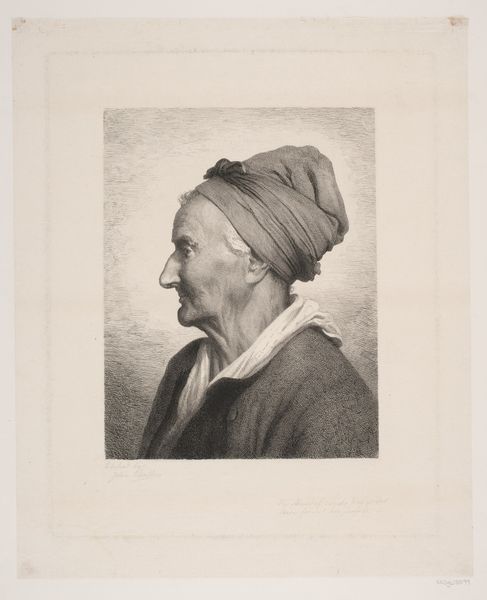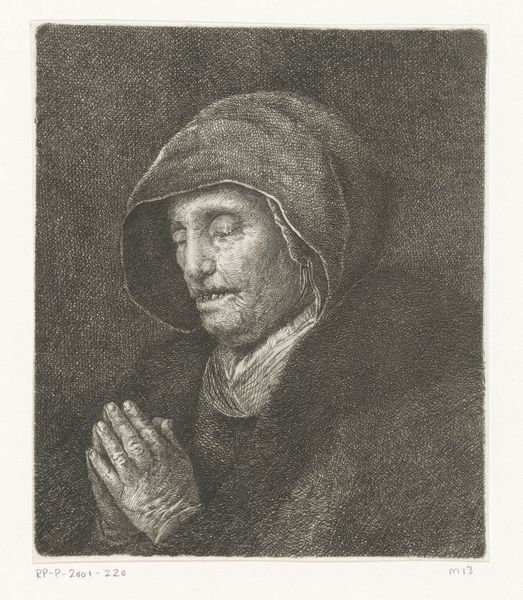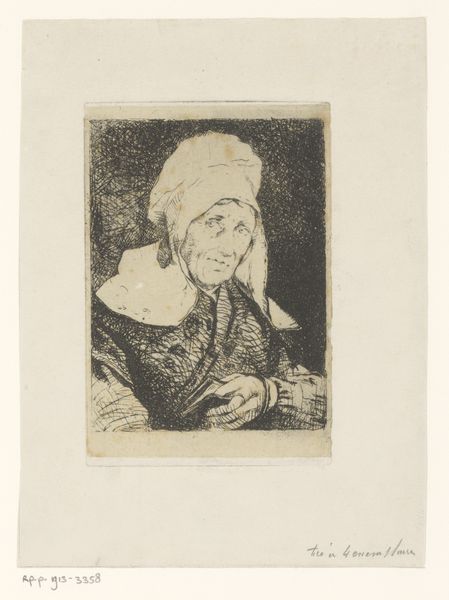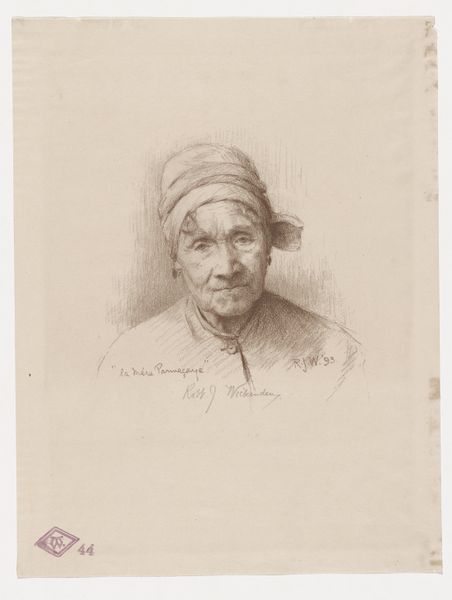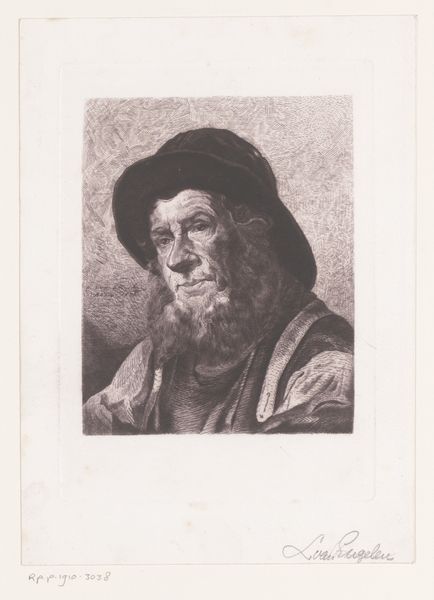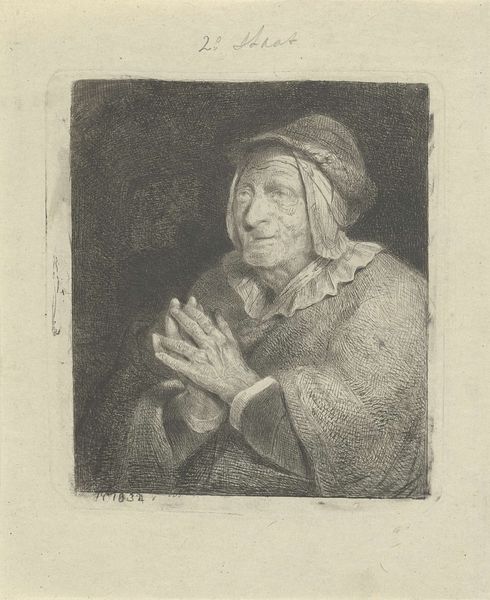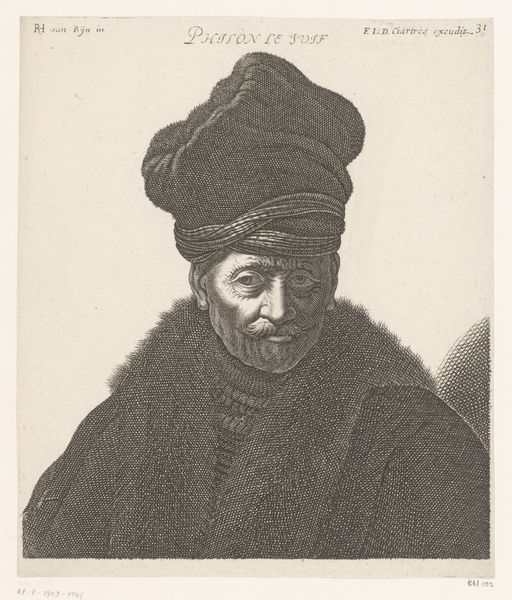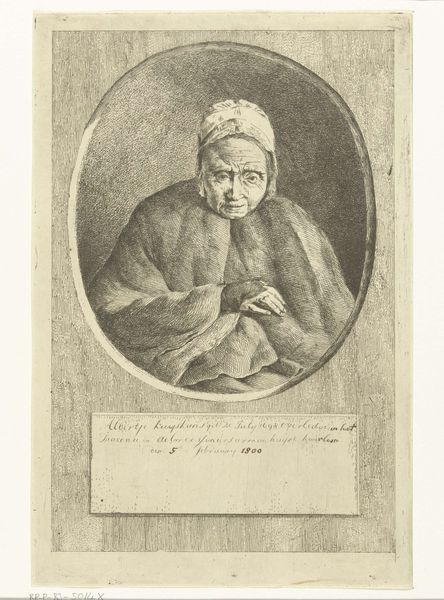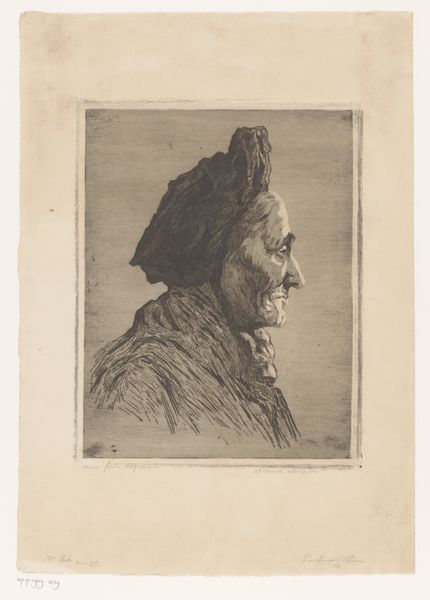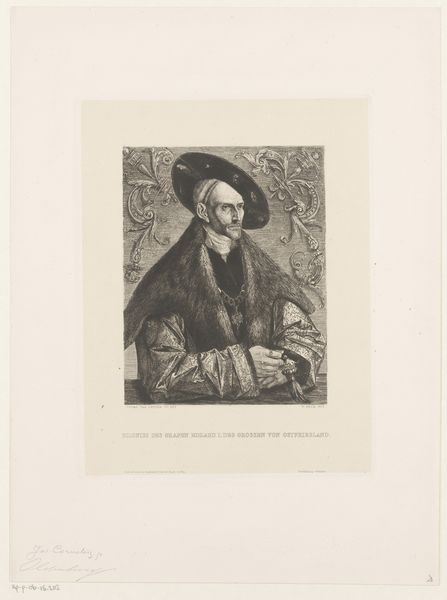
Dimensions: height 150 mm, width 100 mm
Copyright: Rijks Museum: Open Domain
Curator: Standing before us is a remarkable etching by Georg Friedrich Schmidt from 1762, titled "Portret van Neeltje Willemsdr. Zuytbrouck biddend," currently held at the Rijksmuseum. Editor: My first thought? A stark, quiet intimacy. The stark black and white adds a sense of age and solemnity. The texture is so fine, it’s almost velvety. Curator: Precisely. Schmidt was a master of capturing texture, and here we see it most powerfully in the rendering of Neeltje's aged skin, the fur of her coat, and the simple fabric of her head covering. Think about the labor involved in achieving such delicate lines with etching! Editor: The subject’s obvious piety raises questions about the role of women and religion in 18th-century Dutch society. Was Neeltje from a particularly religious social class? Was Schmidt perhaps commenting on societal expectations around female spirituality? Curator: Excellent points. Her clothing certainly points to a certain degree of material comfort. However, let’s also look at Schmidt’s practice; prints like this were more affordable and reproducible than painted portraits, offering a form of remembrance accessible to a wider range of people. Editor: It challenges the typical notions around portraiture. The sitter isn’t immortalized by displaying her beauty, her status… But something arguably deeper. It's a potent reminder of our own mortality. It highlights the lived realities, and perhaps struggles of women’s lives. Curator: A fascinating duality exists between accessibility and the implied personal connection it depicts. Think about the circulation of these prints - objects moving through various hands. What materials and channels helped in creating this accessibility, both literally and conceptually, Editor: It encourages considering not only how Neeltje was perceived at the time but also the enduring narratives of faith, resilience, and aging. She wasn’t necessarily a ‘history maker’ in the grand sense of military conquests, but these seemingly 'minor' portraits give a sense of history as experienced by people. Curator: I am still marveling at how he manages to convey not just appearance, but the feeling of reverence, all through such tactile surfaces and material decisions! Editor: Exactly, and in reflecting, perhaps our appreciation for how artists memorialize their time may even translate to honoring how individuals embody history and, dare I say, activism.
Comments
No comments
Be the first to comment and join the conversation on the ultimate creative platform.

